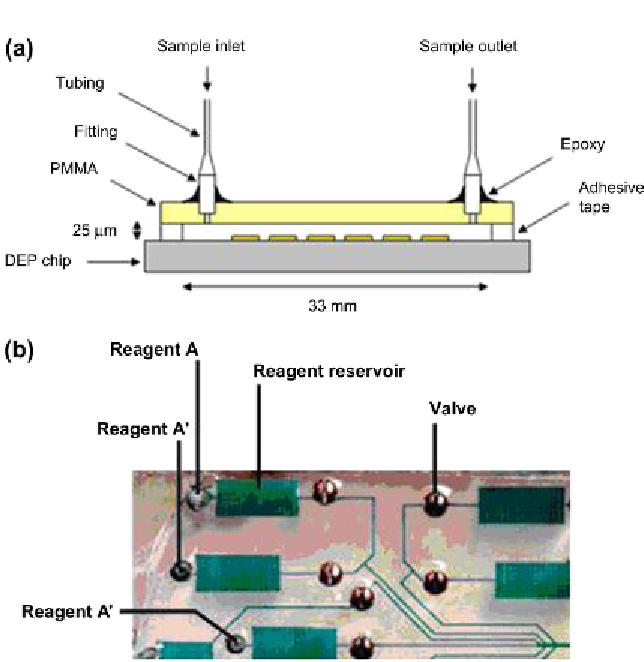Biology Reference
In-Depth Information
Figure 10.1
Illustration of microfluidic systems. (a) Cross-sectional schematic of a
microchannel. Source:
Reproduced from Ref.
2
. (b) Top view of a microfluidic network
of reservoirs, channels, and valves. Source:
Reproduced from Ref.
3
. (For color version of
this igure, the reader is referred to the online version of this topic.)
10.1.1. Microfabrication
Microfabrication techniques, developed for the microelectronics industry,
enable the creation of complex systems with dimensions down to tens of
nanometers in materials, such as silicon, glass, or metals. These techniques
include the patterning of substrates by lithography, the deposition of thin
films using evaporation, sputtering, or oxidation, and the removal of mate-
rial by etching or lift-off processes. Microfabrication is often expensive,
time-consuming, and requires clean room facilities. Since microfluidic sys-
tems generally have a larger footprint than microelectronic devices, this
means that the cost per device is high. Additionally, for some microfluidic
applications, the traditional microfabrication materials are not suitable.
1

Search WWH ::

Custom Search